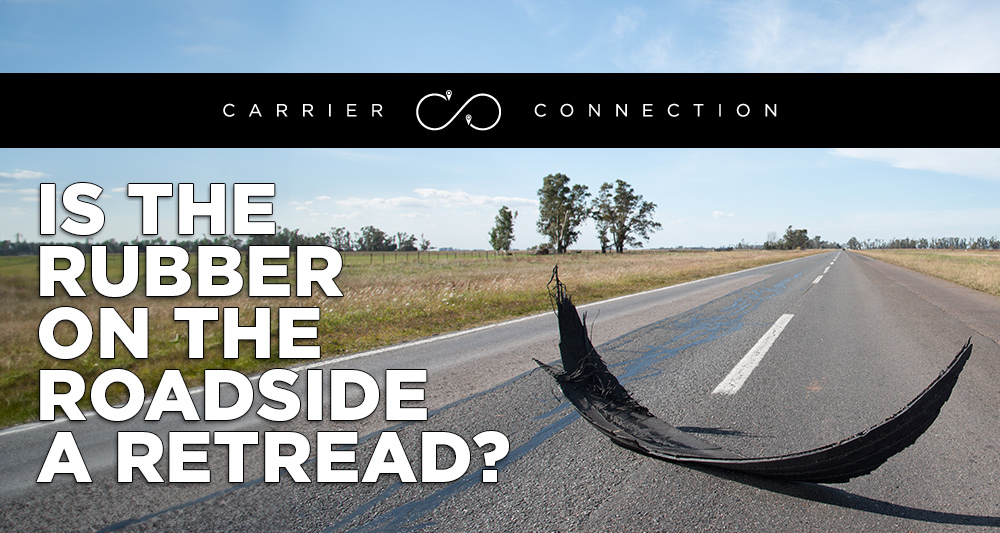![]()
It’s a tale that’s been handed down from generation to generation:
Beware of retreads. The roads are littered with the remains of an inexpensive but unreliable tire option for fleets.
But is this actually true?
It’s tempting to imagine that a casing with a new tread may be somewhat frail in comparison to a regular tire. After all, isn’t it mostly treads you see on the road? Rarely casings?
Now that retreads have been in the market for a while, many tire manufacturers have had the opportunity to conduct market research on the integrity of retreads in the long haul. These tests range from evaluating the durability of retreads to surveying the volume of retread debris on a roadside.
The results are in, and the numbers have a story of their own to tell.
-
Is the rubber on the roadside a retread?
In 2007, the University of Michigan Transportation Research Institute decided to get to the bottom of this question once and for all.
Undertaking a comprehensive sampling of over 1,496 items, UMTRI analyzed the samples to determine if the debris’ origins were of a retread or regular tire.
After extensive investigation, UMTRI concluded that there was no correlation between roadside debris and retread failure. In fact, UMTRI found that the majority of failures were the product of improper tire maintenance.
In short: Is rubber on the roadside a retread?
Answer: Probably not.
-
Will retreads deteriorate faster than regular tires?
Leading tire manufacturers like Bandag have taken this question on in their own studies. Time and time again, retreads have proven to last just as long as regular tires.
Bandag reports, “When properly cared for, a retread tire can drive in any condition and at any speed that a new tire can and perform just as well.”
In short: Are retreads less durable than regular tires?
Answer: No. Retreads are just as durable as regular tires.
With retreads often costing 30% less than regular tires, you may be asking yourself why all carriers don’t use retreads.
The final answer: Perception is reality.
Retreads have fought the unfounded assumption of having low durability since their inception. Today, some of the nation’s top fleets, including C.R. England, have saved enormous amounts by using retreads.
Maybe it’s time for small to mid-size fleets to do the same.
—
The England Carrier Services (ECS) division offers various services for carriers ranging from maintenance to support. As ECS members, carriers have access to nationwide discounts on fuel and tires from dedicated team members committed to finding the best price. ECS also provides factoring services with benefits such as same-day funding to a bank account or fuel card. These options allow carriers the freedom to focus on growing their business while saving time and money.



